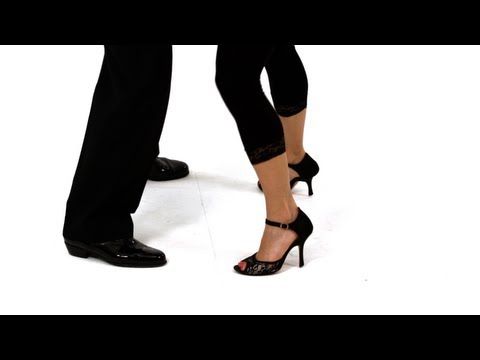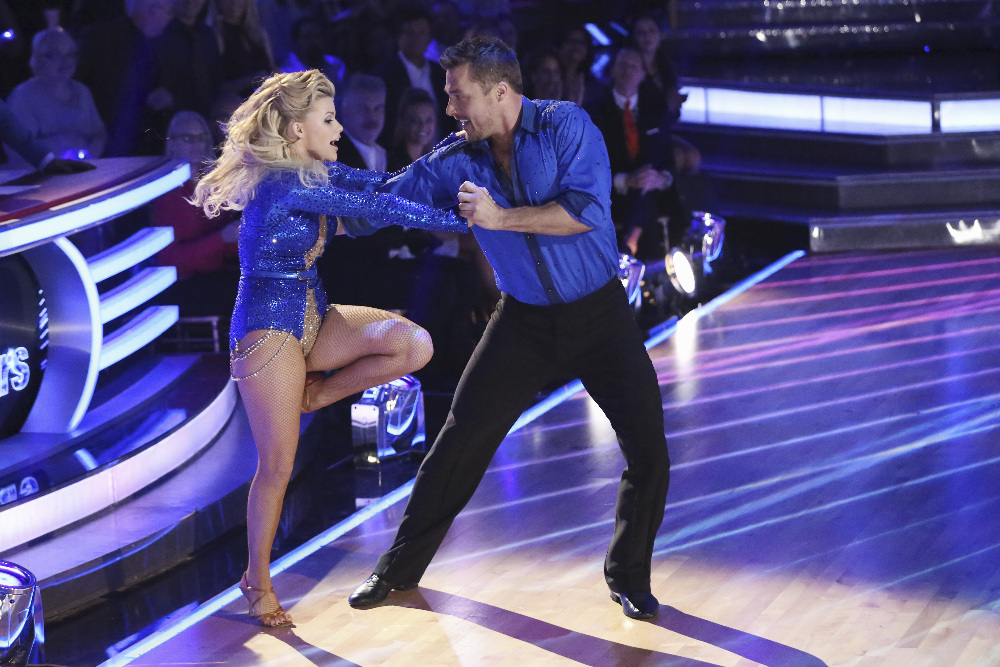How to lead in ballroom dancing
Lead and Follow in Ballroom Dancing | Part 1: How to Lead like Fred Astaire — Duet Dance Studio Chicago
It's amazing to see how two complete strangers can move and dance together as one. And that's the beauty of partner dancing! You don't need to know your dance partner previously in order to dance together. All you need to do is effectively perform your role either as a leader or follower. In this and the upcoming blog post, I'm going to offer tips on how to lead and follow like pros on the dance floor.
1. Maintain a Strong Frame. The dance frame is the most important thing in lead and follow as it helps you maintain the connection between you and your partner. Your frame should be firm and steady all time. "Noodle arms" or a weak frame will hinder the connection to your partner. Think about the cup phones you played with when you were a kid. Your frame is similar to the string that connects the cups. To communicate effectively through the cups, you and your friend at the other end need to keep the string taut by maintaing the distance between you two. And when the string is loose, you lose the connection. When you have a good connection/frame, your partner will feel like he/she is part of your body. Wherever you go, he/she can sense the movement from your body instantly. Here are a few checkpoints to help you maintain a strong frame:
- Cup your partner's shoulder blade with your right hand
- Lift your right elbow
- Roll your shoulders back
- Stand up straight
- Engage your core (tuck your belly in!)
2. Take Decisive Steps. Accidents often happen when the driver isn't sure where he/she is going and is being hesitant with his/her moves. On the dance floor, when you are hesitant about your dance steps, your partner will often start leading and you will end up stepping on each other's toes. As a leader, you must take strong, intentional steps and be clear with your leads and signals. When you are new to a dance step, practice it a lot until you can perform it confidently. Remember, leader, you are in charge on the dance floor!
3.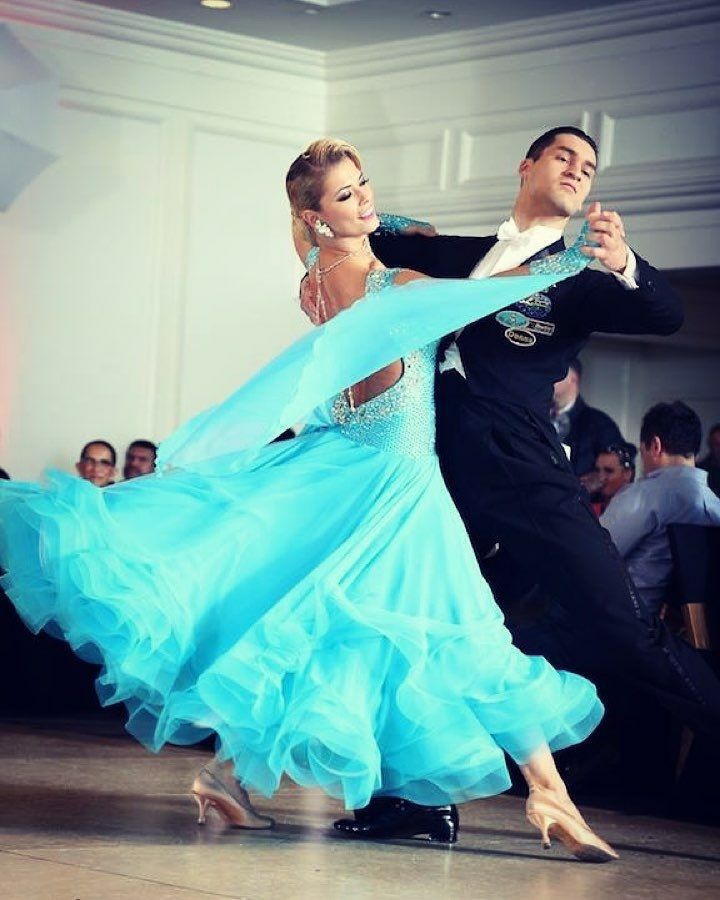 Lead with Your Body. One big misconception in leading is to lead with the arms and hands, which can cause a lot of yanking that is ineffective and uncomfortable to the followers. Remember, movements are initiated from the core/torso, your arms are simply the extension of the torso that connects to your partner. So, when you are about to take a step, think about moving your body first before you take the step. Along with a strong steady frame, your partner will be able to react to your movement accordingly when you lead with your body.
Lead with Your Body. One big misconception in leading is to lead with the arms and hands, which can cause a lot of yanking that is ineffective and uncomfortable to the followers. Remember, movements are initiated from the core/torso, your arms are simply the extension of the torso that connects to your partner. So, when you are about to take a step, think about moving your body first before you take the step. Along with a strong steady frame, your partner will be able to react to your movement accordingly when you lead with your body.
4. Be Gentle. Relax your fingers and try not to squeeze your partner's hands. Your partner should feel some pressure from your hand but you shouldn't hold your partner's hand too tight that causes discomfort and/or hinder the fluidity of a movement, such as a spin. Spins are the very few movements that you use your hands and fingers to lead, but still, you don't want to force a spin. Instead, pay attention to where your partner's weight is before a spin, find the right time to initiate the spin and let momentum do the magic.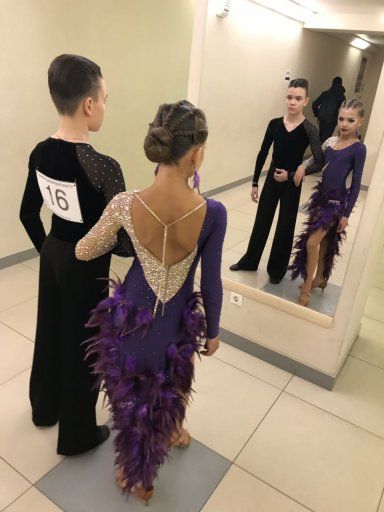
5. Listen to Music. When you are new to partner dance, I understand how difficult it is to listen to the music while executing all the details in leading. However, you must try your best to dance to the beat of the song. Even though your partner is supposed to follow you no matter how off you are with the music, it will make it easier and more enjoyable for your partner if you dance to the music. Check out my previous post that teaches you how to find the beat in music.
What other suggestions and/or observations do you have regarding leading in partner dancing? Please share! Also, stay tuned for our upcoming post, How to Follow like Ginger Rogers!
Happy leading!
-Szewai
The Duet Team is a group of friendly dancers who are passionate about helping people and sharing the joy of ballroom dance. And we love to make new friends and have fun at work! Duet Dance Studio is located in Chicago West Bucktown. We offer ballroom dance lessons, wedding dance instruction and private dance parties.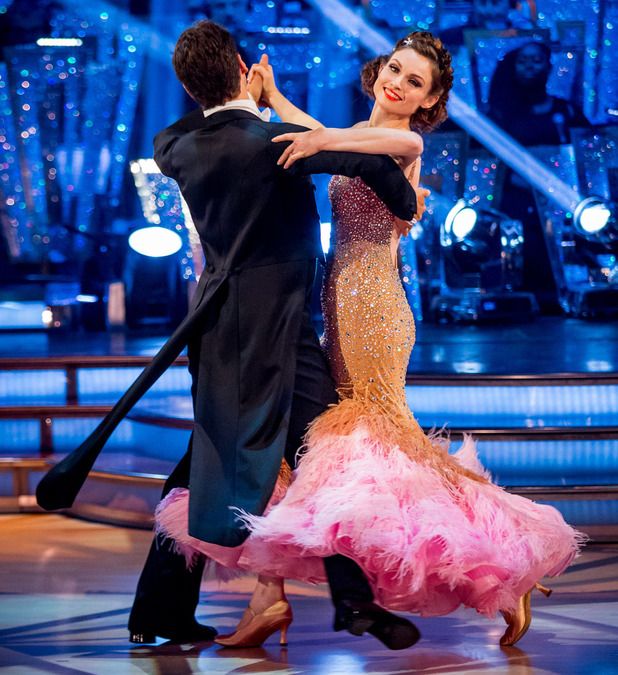 Online Wedding Dance Lessons and Skype dance lessons are also available! Dances we teach include Salsa, Swing, Tango, Bachata, Merengue, Waltz and Foxtrot. Sign up for an introductory dance lesson now to get started!
Online Wedding Dance Lessons and Skype dance lessons are also available! Dances we teach include Salsa, Swing, Tango, Bachata, Merengue, Waltz and Foxtrot. Sign up for an introductory dance lesson now to get started!
What Is Leading And Following in Ballroom Dancing
"So what moves do you know?"
"It doesn't matter to me, let's just dance" said the blonde with the vintage swing outfit.
"But do you know the sweetheart?"
"It doesn't matter, just lead me" as her frustration began to show.
The camera zooms in close enough to see the terror on the young swing dancer's face. It's the same look of showing up to class only to realize that there was a research paper due, and it wasn't done. The same look where the blood and oxygen seems to be leaving from someone's body through a vacuum.
It wouldn't take a mind reader to see what this poor young man was thinking.
"Lead you? What does that mean?"
The Basics Of Leading and FollowingThe Leader - communicates the patterns of a dance through decisive movement
The Follower - is sensitive to the signals of a leader and responds accordingly
Leading and following is the primary ingredient to Social Dancing.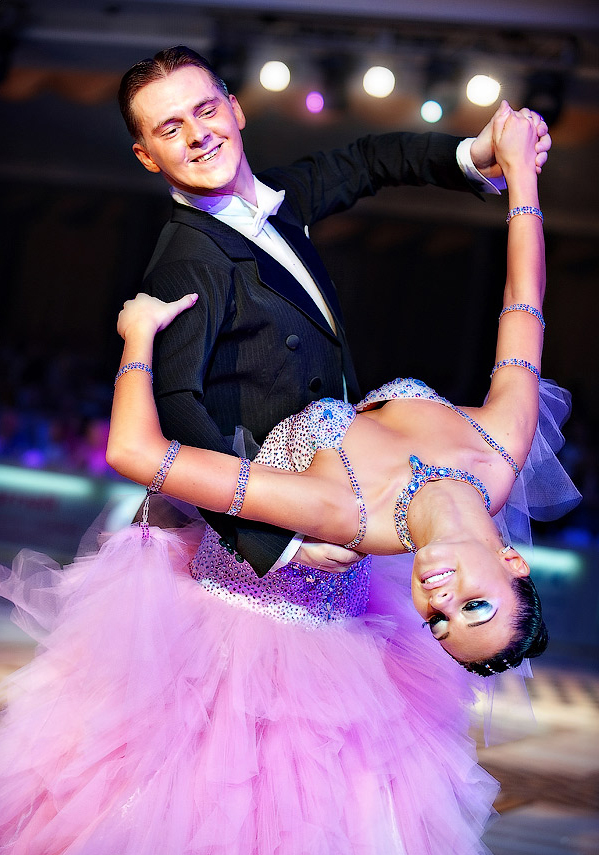 It is how a dance couple moves together as a unit without the need of a specific song or choreography. It is even encouraged in Competitive Dancing, as it adds an authentic look to the action and reaction of the partners.
It is how a dance couple moves together as a unit without the need of a specific song or choreography. It is even encouraged in Competitive Dancing, as it adds an authentic look to the action and reaction of the partners.
Leader or follower, whichever role you choose to occupy is, quite literally, your job description on the dance floor. What you do with that responsibility will determine who you can dance with.
Leading And Following Myths in Ballroom Dancing1. "A Strong Lead"Important Note: In some cases, leading and following takes a back seat to precise choreography designed for performances. For more on performance and competition dancing, we recommend you read "31 Things Dance Judges Want To See You Do"
Being a good leader has nothing to do with physical physique or pressure. A strong lead is a clear lead.
2. Leading in dancing is different from leading in a company meeting.
One is done through the actions of the body, and one is done through verbal communication and PowerPoint.
3. Following is not dependent on "A strong lead" or a "good leader"A great follower will wait long enough to feel any lead. It's a skill, and it takes training, just like leading.
4. Following is not predictive.There is no mind reading or code breaking when it comes to becoming a good follower.
5. You need to learn how to lead and follow every single step you learn.As with most academic or recreational activities, leading and following is built around core fundamentals. It's not a series of highly sophisticated and unique requirements.
3 Tools to Becoming A Better Leader in Ballroom Dancing1. Utilize two contrasting basic movements
Pairing together East/West patterns, like the Rumba Breaks, and North/South patterns, like the Cuban Walks in Rumba, create the sharp contrast necessary for clear changes in direction.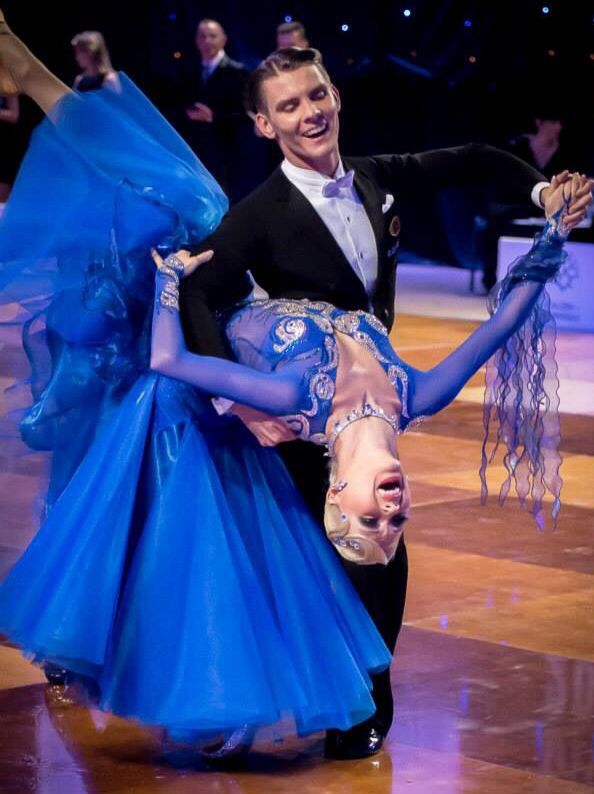
2. Be willing to make a bold mistake
If your decisiveness was measure by Font size, then a smaller font would require better vision. This means that the less decisive you are, the only people that could follow that movement would be at a higher skill level.
3. Understand That Subtle Differences Are Advanced
The difference between a Swing Step and Magic Step in Foxtrot offers very high contrast. They are, essentially, black and white. However, the difference between the Junior Walk and Grapevine are much more subtle in contrast. This requires a greater degree of definitive movement to pinpoint the difference. A great leader will reserve these dancing "grey areas" for more advanced dancers initially to develop more confidence in the high contrast transitions.
3 Tools to Becoming A Better Follower in Ballroom Dancing1. Eliminate any dependence you have on Verbal & Visual aids
Asking your partner what they are going to do only enables the leader to take a less effective way out, and limits your ability, in the long run, to follow. It's the equivalent of always looking in the back of the Algebra textbook for the answers. Sensitivity is developed through physical movement, and a carefully constructed set of choices through your Arthur Murray instructor. The more you can limit the amount of visual and verbal cues, the better, and more sensitive you will become as a follower.
It's the equivalent of always looking in the back of the Algebra textbook for the answers. Sensitivity is developed through physical movement, and a carefully constructed set of choices through your Arthur Murray instructor. The more you can limit the amount of visual and verbal cues, the better, and more sensitive you will become as a follower.
"The lead will feel great, the longer you wait."
That's it.
Your next tattoo has been figured out, now you just need to design the background. In all seriousness, a great follower is, by definition, slightly behind the leader. If you think about it, anytime a follower says "I can't feel his lead" it was probably because they just didn't wait long enough. Sure, there are timid leaders out there, that's how every leader starts, but willing to wait longer and tuning in to a higher physical frequency is what separates average followers from great followers.
3.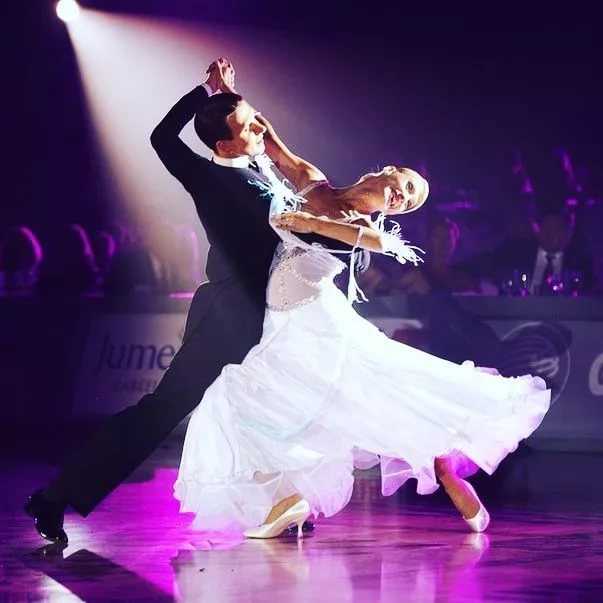 Posture and Tone Will Allow You To Do A Lot
Posture and Tone Will Allow You To Do A LotStanding with great posture, committed to a specific foot, and waiting puts you in prime position to feel where you are going next. It's only when you are standing on both feet (50/50), leaning in a direction, or anticipating that next box step that true "backleading" is revealed.
Key Points to Remember:
Posture: This is your satellite signal. It's the way you receive the data.
Tone: Being committed to a foot and balanced is like the tripod that hold up the antenna.
Note: Gravity can be your enemy if you're trying to become a better follower, so don't leave anything up to it. The better your balance, the more you can move by choice with your partner.
New Ways Of Thinking About Lead and Follow1. Football: Offense and Defense
Offense: The leader is the quarterback. They've got to be decisive, communicate the plays (their team is all of their limbs), and operate on time with quick decision making as an essential key to success.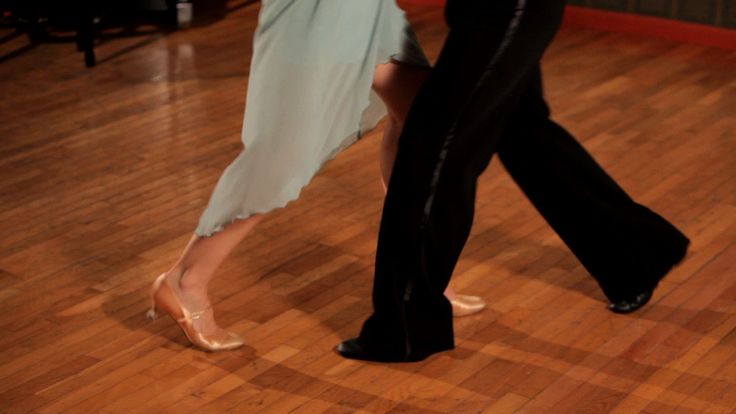
Defense: Cannot ask the quarterback which play they are running. The job of the defense is to be as agile and reactive as possible. They cannot predict which direction the play is going to go, but they can put themselves in the best possible position to read and react to the direction of the play.
2. Conversations: Speaking and Listening
Speaking: The leader is the speaker. They need to be clear, audible, and concise. If their signals are the public speaking equivalent of a presenter without a microphone, then only superheroes with ultrasonic hearing can determine the message.
Listening: You know how cute it is when couples finish each other's sentences? Well, depending on the conversation, it can also be a huge red flag that you aren't listening. A follower is an expert listener. They don't predict the outcome of the conversation, they take it all in, wait, and respond.
3. Limousine: Driver and Passenger
Driver: A driver will rarely be recognized for their parallel parking prowess, but they can easily get recognized for failing to deliver their passenger to the airport on time.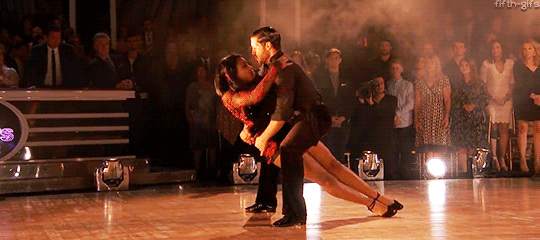 Being a leader means that there are a lot of factors to think of, but that shouldn't be the responsibility of the celebrity passenger behind the privacy glass.
Being a leader means that there are a lot of factors to think of, but that shouldn't be the responsibility of the celebrity passenger behind the privacy glass.
Passenger: They say the leader is the frame, and the follower is the picture. In this comparison, the follower is a celebrity passenger. As the celebrity in the back you have no interest in what happens behind the steering wheel, as long as the bumps are at a minimum, and you arrive on time.
Learning To Lead and FollowThe most essential ingredient for ballroom and latin dancing is, without question, leading and following. This ranks higher than arm styling, hip motion, and yes, even spray tanning. The real trick, is understanding how to get your body to acquire it.
If this were golf, it would be your full swing.
If this were a foreign language, this would be working on conversation.
If this were Drivers Education, this would be the behind the wheel portion.
As important as all of these stages are to these activities, there's one common ingredient: They can't be done alone.
There is a neverending supply of dance patterns floating throughout the internet, but there is one unfortunate detail - you can't learn to lead and follow by watching a video. We cover this in greater detail with the article "The Truth About Dance Videos". Just like a golf magazine can't teach you to swing better, a textbook can't improve the way a foreign language sounds, and the drivers manual can't actually teach you to become a driver.
To truly learn this the right way, the first time - work with a professional.
At Arthur Murray, each of the professional dance instructors are trained in the latest methods to teach you how to lead and follow on the dance floor in a fun, quick, and easy way. Read more about the History of Arthur Murray here.
Final ThoughtThat young swing dancer didn't lack for dance patterns.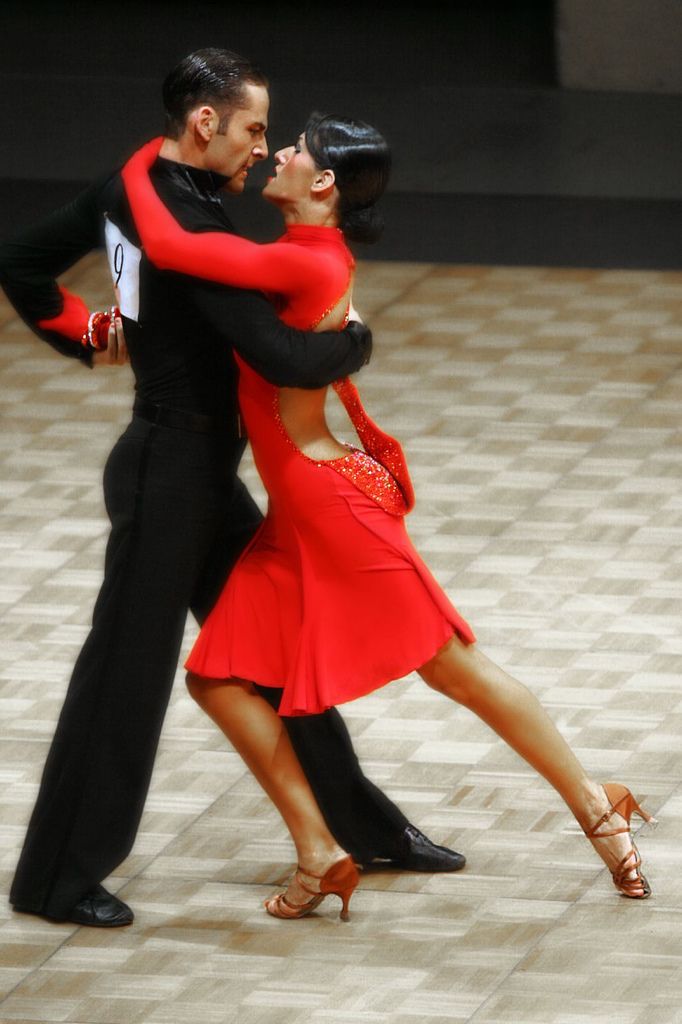
Unfortunately, he only learned to dance in group classes, with one partner, and with no clear understanding what leading really was. Dancing fluently with any partner wasn't an option for him at that stage. Sometimes it takes tough moment to learn what's important. Sometimes it needs to be scary, rattling, embarrassing, and that sudden realization that you forgot to pack some important equipment... with an extreme close up.
The good thing is that eventually, with training, you can heal from it.
Just make sure you write a blog about it... like I did.
Whether learning how to dance is something you've put off for far too long, or you're just stuck in a rut with your leading or following - everything will make more sense when you step in for a consultation appointment with one of our certified Arthur Murray instructors.
| The Goonies Guide To Ballroom Dancing | |
| The Beginner's Guide To Ballroom Dance Lessons | |
| 21 Challenges To Improve Your Social Dance Skills | |
| What Could Make These Arthur Murray Instructors Speechless? | |
| 49 Steps To Ballroom Dance Etiquette |
Tips for children involved in dancing.
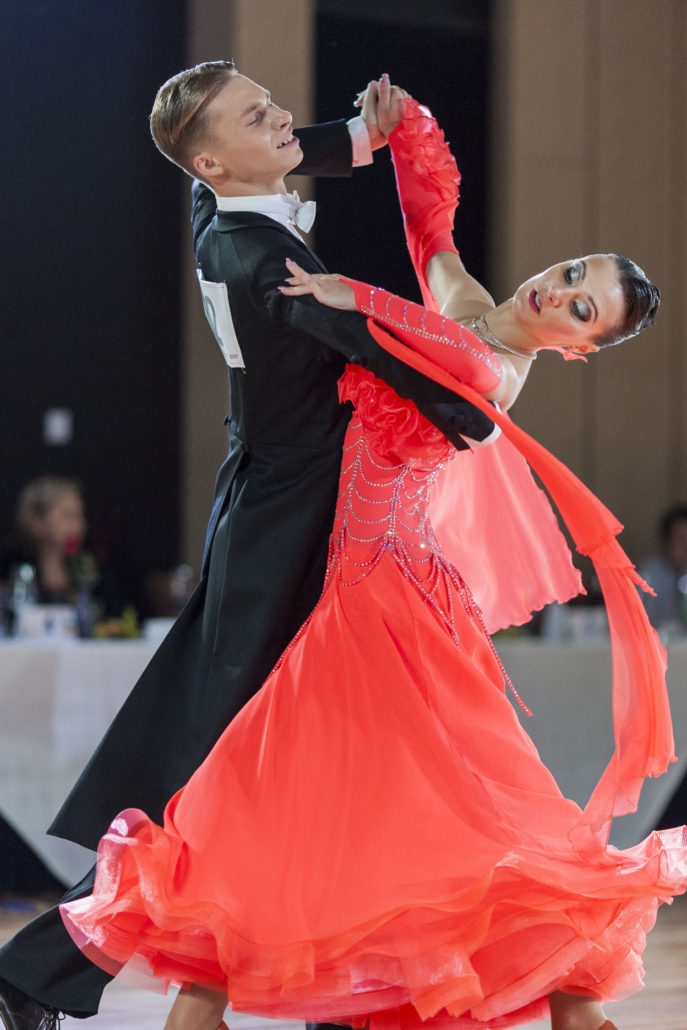
You come to dance classes for the first time or come to a new group for yourself, to a new teacher. Like any person who enters a new team, you may have questions about how to behave correctly.
We will give you some tips to help you cope with anxiety and doubt.
Get used to the new environment for the first few sessions
In the first few sessions, you will get used to your trainer's teaching method. Each coach has his own lesson plan:
- warm-up, exercise, stretching,
- study and practice of the basic elements of dance,
- learning a dance routine,
- improvisation work for dancers,
- dance battle or jam between students, etc.
In addition to a different program, each coach conducts a lesson in his own way: some teachers explain literally every movement they make; others first show all the movements, then explain; someone slowly shows the movements, and explains those points that are incomprehensible to the students.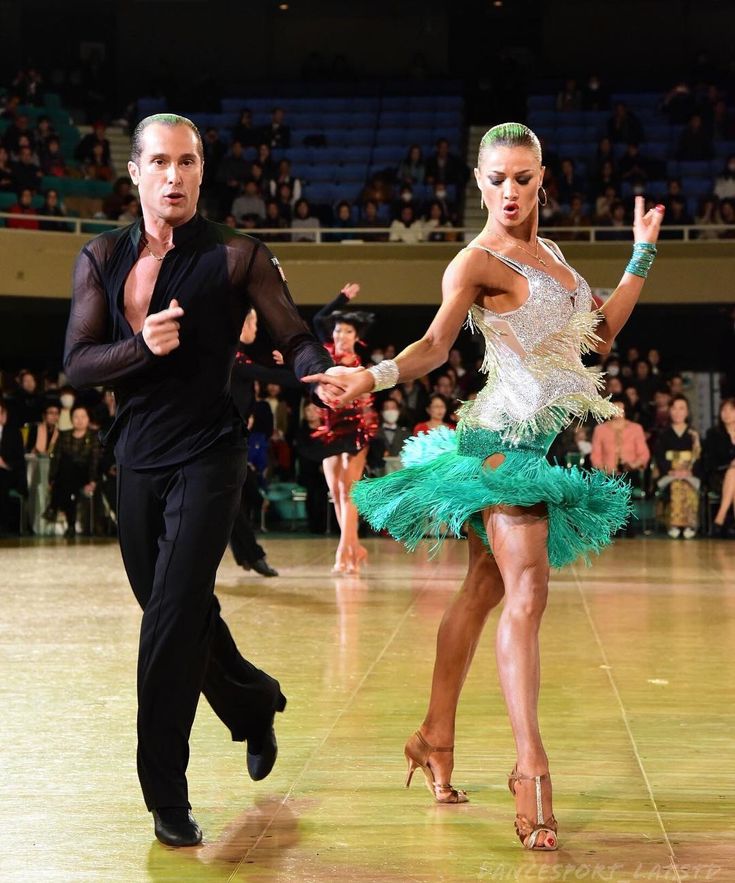 For some teachers, music plays the entire lesson, while others first work out everything without music, and only then begin to work out movement and dance to the music. And each of the methods has the right to exist, the main thing is to understand that, no matter how the teacher builds his lesson, the student should always get answers to all his questions. So, you always need to clarify the points that are in doubt. nine0003
For some teachers, music plays the entire lesson, while others first work out everything without music, and only then begin to work out movement and dance to the music. And each of the methods has the right to exist, the main thing is to understand that, no matter how the teacher builds his lesson, the student should always get answers to all his questions. So, you always need to clarify the points that are in doubt. nine0003
Just during the first lessons, you will get used to your teacher, understand the program and the form of the lesson, understand when it is time to ask a question, and when it is worth waiting and the coach will explain everything himself. Take your time and don't worry - give yourself time to get used to the new environment.
Become a part of the team
In order to feel "at ease" in a new team, it is important for any person to understand that he is part of the group. It is important on your part to show that you enjoy being in the group: do not be gloomy and overly serious, others may think that you do not like something. As a rule, this causes a defensive reaction in the group - people become serious towards you. Therefore, smile and enjoy the lesson, the fact that you are dancing with other people - you will be gladly received as a friendly and interested person. The teacher and the group will also show interest in you: ask questions, offer help. Do not push them away, do not be afraid, do not think that someone wants to offend you or violate your personal space - everyone wants to feel the community of the team and the cohesion of the team. nine0003
As a rule, this causes a defensive reaction in the group - people become serious towards you. Therefore, smile and enjoy the lesson, the fact that you are dancing with other people - you will be gladly received as a friendly and interested person. The teacher and the group will also show interest in you: ask questions, offer help. Do not push them away, do not be afraid, do not think that someone wants to offend you or violate your personal space - everyone wants to feel the community of the team and the cohesion of the team. nine0003
Talk to the teacher
Each student wants to know what he is doing, what he needs to work on more intensively, where to be more attentive. The answers to these questions do not need to be looked for exclusively in the mirror, they need to be received from the teacher, at least at first. The teacher will be able to point out your strengths and weaknesses, encourage, inspire and suggest directions for development. Feel free to ask questions, consult, consult with your coach.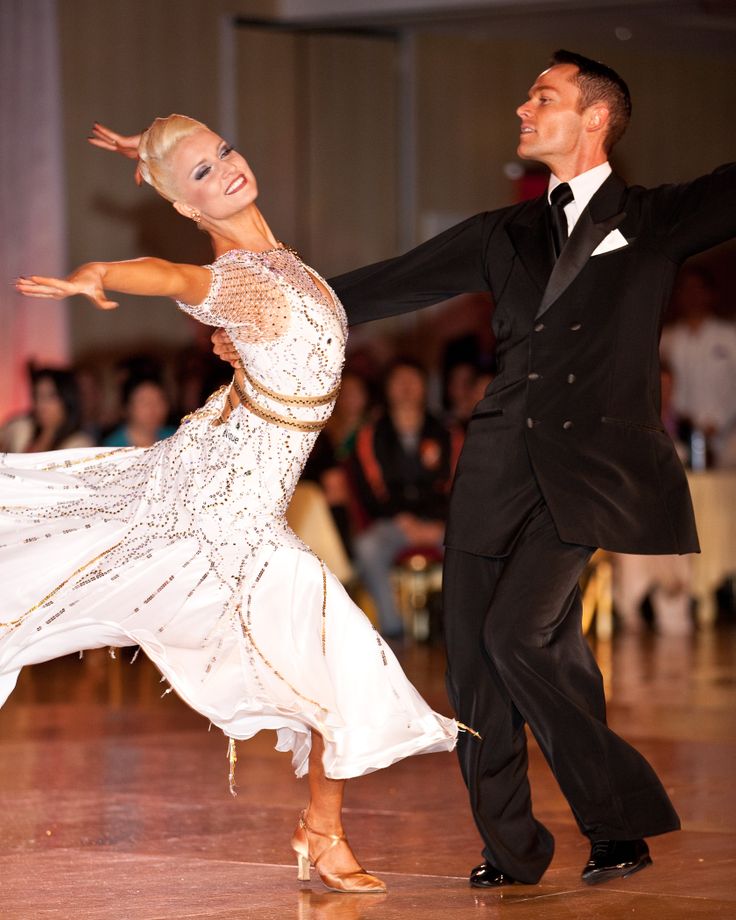 This conversation will allow you to draw conclusions about the coach, about the direction you have chosen, about your level at the moment and about your capabilities. nine0003
This conversation will allow you to draw conclusions about the coach, about the direction you have chosen, about your level at the moment and about your capabilities. nine0003
Treat dance lessons responsibly
Whether you started with a group that has just opened or joined an already established group, you should prepare for class. There are three main points of preparation:
- Repeat the learned movements, elements, dance sequences at home or before training so that the whole group works intensively and productively during the lesson (it’s one thing if a student doesn’t succeed, another thing, if he forgets the movements and makes no effort to remember!)
- Be collected and neat. Make sure that it is pleasant and comfortable to be near you during the lesson.
- Arrive to class on time, don't miss a workout without a good reason.
Dancing lessons are not only exciting, dynamic and bright. It is responsible, difficult and in some moments even scary.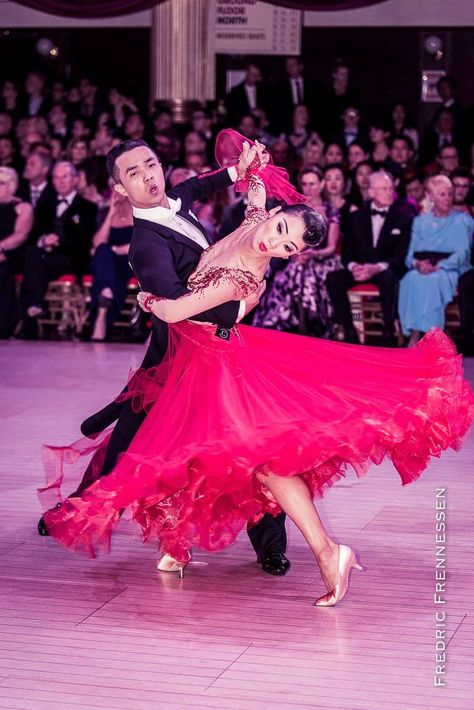 Do not be afraid to overcome yourself and work on yourself! And remember, EVERYONE CAN DANCE! Get started! Dare!
Do not be afraid to overcome yourself and work on yourself! And remember, EVERYONE CAN DANCE! Get started! Dare!
Training is, first of all, the repetition of the same action.
If you are learning a new figure or composition (variation, scheme, link, chain), then you need to repeat the same steps many, many times.
If you want to have a strong and beautiful movement, then you need to apply the same effort many, many times.
If you want to achieve accuracy, speed and coordination of movement, then you need to repeat the same sequence of actions many, many times. nine0003
For example:
• this could be an effort to straighten the knee;
• "straighten the knee before putting weight on the leg" action;
• sequence of actions “turn the body with the muscles of the back, take the leg out for a step, straighten the knee, start working with the supporting foot, collect the press and muscles of the buttocks, transfer weight, stretch the muscles of the body and arms”, etc. ;
;
• effort to pull the foot;
• effort to keep the press always assembled; nine0003
• effort to keep the shoulder blades always lowered;
• and so on……
In a nutshell, training is creating a good habit. In order for your body to move competently, coordinated, plastic, fast, strong and beautiful, you need to get used to holding and moving like that. And in order for it to get used to holding on and moving like that, you need to repeat the same action or effort many, many times.
When a useful habit has been formed, it is already difficult to get rid of it. If you try really hard and repeat the special moves and efforts every time you dance in training, you will get used to dancing correctly very quickly. And then you won't have to think about it every time. nine0003
Remember:
• the coach cannot create a habit for you and make some effort for you, because it is your body, not his, and it should make the effort, not the coach's body, because it is you to go to the tournament , and not the coach, and the judge will look at you, and not at the coach.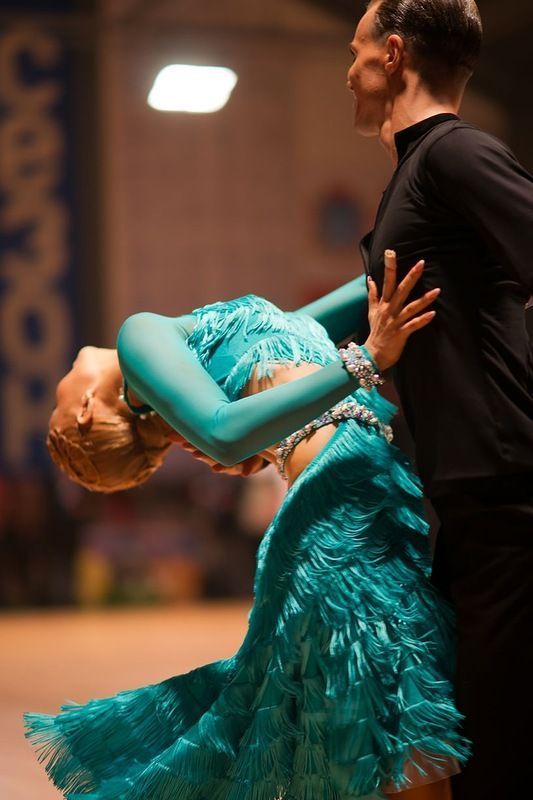 The coach can only explain to you how to do it, what is right and wrong, and what needs to be done so that you are better than everyone else. And to do this is only your task and depends only on you. nine0003
The coach can only explain to you how to do it, what is right and wrong, and what needs to be done so that you are better than everyone else. And to do this is only your task and depends only on you. nine0003
• Only the one who trains and repeats the most, the strongest, the hardest, and the longest wins.
• There are a lot of dancers, but only one first place! Everyone wants to keep it busy, everyone goes to training, everyone tries the best they can, but only the one who tries the hardest every minute in training wins.
• One minute in practice when you were chatting, inattentive, or not trying your hardest - that's another couple that beat you in the tournament. Opponents do not sleep! They try hard in training and want to take first place as much as you do. nine0003
• A coach cannot make you dance the best, train and win. Only you decide whether you need it or not. A coach cannot teach you to dance better than anyone if you do not do everything possible for this.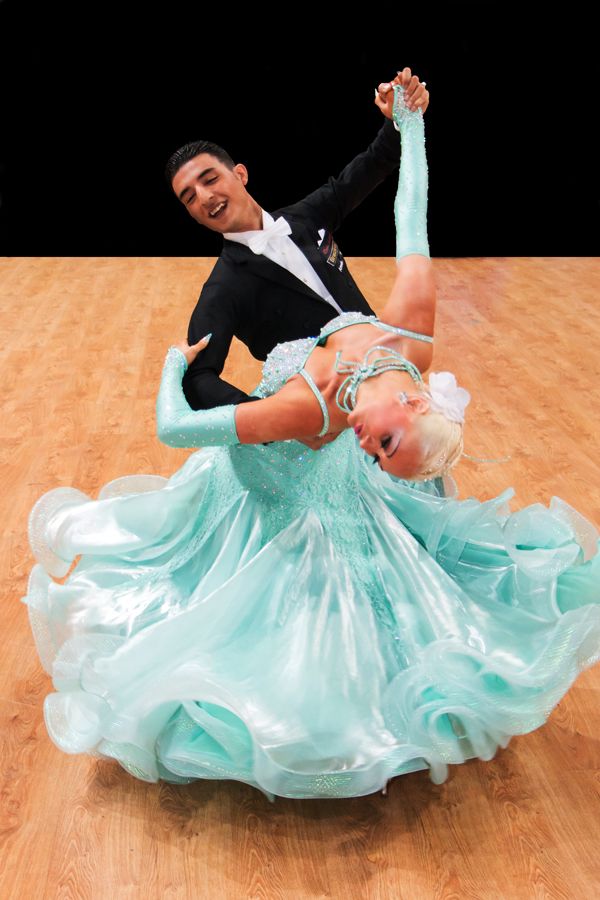
• Losing is the loss of a lazy dancer, winning is the winning of a talented coach.
You need to train EVERY DAY. Preferably a few hours.
Before training, you MUST warm up - jump, stretch, squat. nine0003
Before an individual lesson and self-training, you should have a PLAN in your head, which you must definitely tell your partner. For example, something doesn't work in the waltz or you don't like your feet in Latin. This is what needs to be worked out.
After individual lessons and group lessons, IT IS OBLIGATORY TO WORK THE INFORMATION RECEIVED, otherwise the muscles WILL NOT REMEMBER ANYTHING.
Dynamic stereotype, or muscle memory, works for 48 hours (after class). If you do not repeat the information received, then at the next lesson you will have to start all over again - the muscles will ALL forget
Repeat songs as often as possible! Even repetition in the mind gives a huge positive result, because it is the brain, our thinking organ, that gives commands to our body!
Always work to the FULL POWER in class, in practice. If you dance without trying to IMPROVE SOMETHING, you do not grow as a dancer.
If you dance without trying to IMPROVE SOMETHING, you do not grow as a dancer.
Spend as much time as possible on BASE and TECHNIQUE. Without precise technique, everything you do looks amateurish.
If you are tired and your muscles hurt, it means YOU HAVE WORKED IN vain. nine0003
The start of a private lesson can be the most effective moment for all 45 minutes of class. It is at the beginning of the lesson that you can determine whether the teacher and students will work productively or spend “not very pleasant” time together.
This does not refer to the amount of information the dancers will receive or the benefit they can derive from this individual lesson. It's about the overall good mood that the teacher and dancers may or may not get from the lesson. nine0003
Ultimately, an individual lesson on a positive note is the key to being remembered as a good student who is a pleasure to work with. So, what do we need to do when you go to a private lesson? Here are 5 tips to keep in mind:
Have a plan for an individual lesson
You need to know exactly what questions you are going to ask the trainer, what aspects of your dance you need to check. Even if you come to class with your trainer, don't expect them to know better than you what you need to work on. Start the lesson by briefly and clearly explaining to the coach what you would like to do today. And after that, everything will be in his hands. nine0003
Even if you come to class with your trainer, don't expect them to know better than you what you need to work on. Start the lesson by briefly and clearly explaining to the coach what you would like to do today. And after that, everything will be in his hands. nine0003
Show your human side
Remember that there is a person in front of you just like you. Like you, your teacher may have good and bad moments in life. For this reason, try to start the individual lesson in a more friendly way. Don't attack him with all your problems with your partner or with a bad result from the last competition.
Instead, try starting the conversation the way you would with your friend. For example, you can ask him how he is doing. If the coach is from another city or country, ask him or her how you got there, whether the flight was easy... These small details will positively affect the mood of the whole lesson. Both you and the teacher will benefit from this. nine0003
Be intuitive
As a general rule, different teachers may specialize in different areas of dance. Someone can be very useful in musicality, someone in technical aspects. Therefore, if you want to get the most help, try to choose a lesson topic in which the knowledge gained will become more effective.
Someone can be very useful in musicality, someone in technical aspects. Therefore, if you want to get the most help, try to choose a lesson topic in which the knowledge gained will become more effective.
This is especially important when you are working with intermediate teachers. When you take an individual lesson with dance legends, you can be sure that they will give you all the information you need and useful in your particular case. nine0003
But when you see a teacher with less experience, try to find his strongest point. You will get good information and he/she will work with you confidently.
Check how you look
If there's one thing that makes all teachers go crazy, it's when a student looks inappropriate. And this does not mean only the dress code. It's all about attitude. Hold yourself in such a way that you can be immediately identified as a dancer. Always focus on the lesson. Don't yawn and never lose the thought discussed in the lesson. nine0003
nine0003
Be a couple
Last but not least! Since we are talking about ballroom dancing, the most important aspect is the couple. Be a team!
Definitely, this is the most unpleasant thing when a partner and a partner argue with each other in the presence of a teacher. We all know that this happens to all couples sometimes. But let's not forget that this is the most difficult moment for the teacher when he/she has to look at this theatre.
Communication between student and teacher is the most important
In our dancesport world, connection and feelings between people are often the reason to tell a good dancer from a bad one. It's clear to everyone how important it is to be seen as a genuine, positive, hard-working person, and not someone obsessed only with the need to get results.
This is why this article does not mention the actual level of dancing you are at. All of these aspects, which are immediately felt by teachers as soon as they start working with you, are the main reason for liking you or not. nine0003
nine0003
1. Competitors must:
- know and strictly follow the Rules, Regulations, program of competitions, conditions for their holding;
- to have record classification books, as well as other documents, if they are provided for by the Competition Regulations, and present them to the secretariat during registration;
- register for participation in the tournament at the time allotted for registration;
- have a neat appearance, suits appropriate for the competition; nine0014
- timely get acquainted with the plan-scenario of the competition, the schedule of entries, observe the schedule established for the tournament, stay in the places reserved for participants;
- enter the parquet in the order of entries scheduled for this stage of the competition;
- if there is one exit to the tournament area, the couples leaving the parquet must let the couples leaving the next run;
- follow the orders of the judges; nine0013 if it is impossible for any reason to continue the competition, immediately inform the chief judge about this;
- when participating in the finals, enter the awards ceremony in the appropriate tournament costumes;
- at the end of the competition, through his representative or independently endorse the results of his performance in the classification books.

Note: in case of violation of the Rules or incorrect behavior, the main panel of judges issues a warning to the participant. In case of repeated violation, the athlete is suspended from participation in the tournament. In case of especially gross violations, the athlete may be suspended from participation in the tournament by decision of the panel of judges without warning. nine0003
2. Competitors have the right:
- to have a representative (one from the collective or team) to resolve all issues that arise during the tournament;
- when holding tournaments in certain types of competitions, take part in one or more types of choice, stating this at registration;
- have the same accommodation conditions as other competitors;
- at the end of registration, no later than 15 minutes before the start of the competition, receive information on the procedure for holding the tournament; nine0014
- in the prescribed manner, before the start of the next stage, to receive information about the results of the preliminary rounds;
- for accommodation, registration and warm-up, contact the judges at the participants;
- on the issues of holding the tournament, through your representative (captain), contact the deputy chief judge, chief secretary, chief judge;
- at the end of the tournament, through your representative (captain), receive full information from the secretariat about the number of participants, the place taken, the coefficient of the tournament, entering it into the classification book.
 nine0014
nine0014
"Sports ethics" is usually called a set of norms of behavior that regulate people's relations in the field of sports activities. In the ordinary sense, it is perceived as unwritten norms of behavior for people involved in sports. On the other hand, relatively recently sports ethics began to be considered as a science, an important part of general ethics. Both of these interpretations are closely interconnected, interdependent, often intertwined and have a common basis - morality as a necessary quality for favorable, positive relationships between participants in the sports process. nine0003
The ability to behave under the most difficult circumstances, which is a sign of internal organization, composure, discipline, culture - this is also the prerogative of sports ethics. For example, an athlete should never get into an argument with a judge. The unwritten laws of sports do not allow you to refuse to perform, play for time, leave the race, stop the game ahead of time, even if the athlete is sure that he still lost. It is unethical to express annoyance from dissatisfaction with a partner, rival. It is especially important to be able to control yourself after a loss. With dignity, paying tribute to the skill of the opponent, congratulate him on his victory. Attitude towards an opponent is an indicator of the true upbringing of an athlete. nine0003
It is unethical to express annoyance from dissatisfaction with a partner, rival. It is especially important to be able to control yourself after a loss. With dignity, paying tribute to the skill of the opponent, congratulate him on his victory. Attitude towards an opponent is an indicator of the true upbringing of an athlete. nine0003
Genuine ethics in sport is associated with such value concepts as patriotism, duty and responsibility, friendship and collectivism, honor and dignity, justice and disinterestedness. Along with the development of interethnic and international sports relations, the norms of sports ethics acquire a universal character. A number of them are enshrined in the international rules for competitions in sports, and in a generalized form - in such official and semi-official establishments as the Olympic Rules, the Sports Manifesto and the Principle of Fair Play, introduced under the auspices of CIEPS (one of the cultural organizations of UNESCO) , etc. Since these norms are consistent with the universal norms of humane relations, they are part of the ethics of Russian athletes. nine0003
nine0003
Human behavior is largely based on moral principles that reflect the moral side of his personality. The relations between the subjects of sports activities are based on universal moral principles: honesty, decency, justice, sense of duty, patriotism, collectivism, humanity, respect, reasonableness, courage and honor, etc.
are reduced to the requirements to behave in sports in a way worthy of a person: to honestly observe the established rules of the competition, not to resort to prohibited methods of achieving superiority over an opponent, not to be rude, etc. The reasons for deviations from the norms often lie not in ignorance of what is what is moral and what is immoral in sports, but in the absence of firm convictions and strong skills of moral behavior developed in relation to the characteristics of sports activities. Its specificity is such that even an athlete who has general moral convictions, but does not have practical experience brought to stable behavioral skills in difficult sports situations, may find himself in the role of a violator of the rules of sports ethics.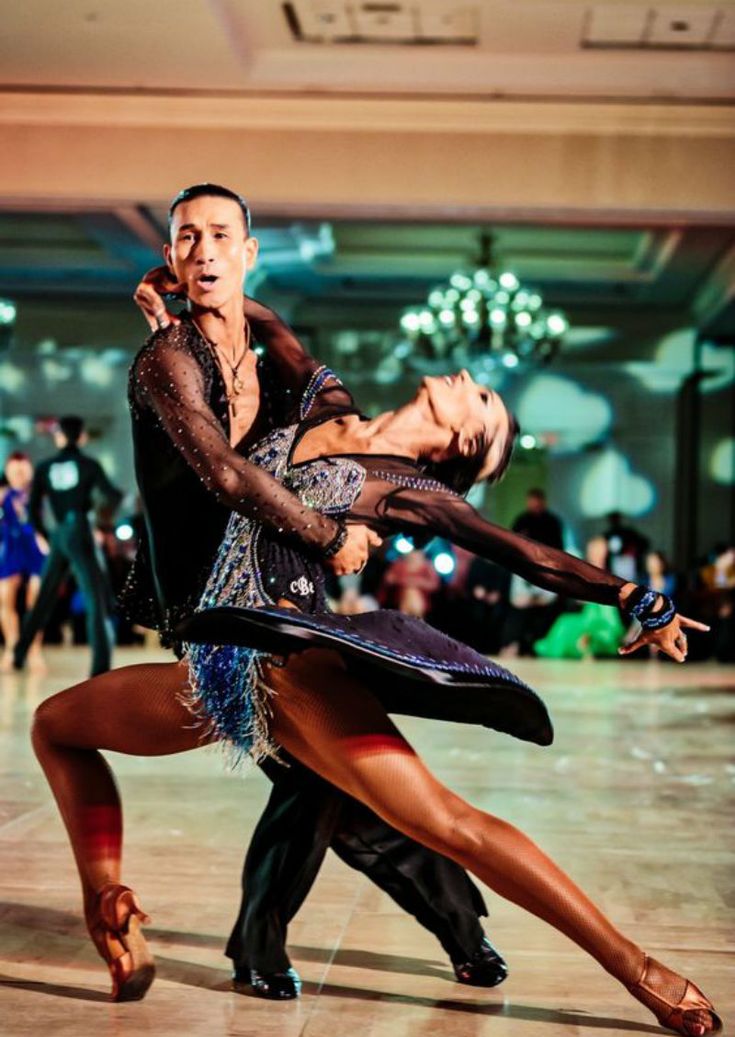 This is the reason for the paramount importance of the methods of practical training in the process of mastering its norms. nine0003
This is the reason for the paramount importance of the methods of practical training in the process of mastering its norms. nine0003
Moral convictions are formed in the process of a person gaining moral experience of behavior. Therefore, the influence of the family, comrades in sports and studies, the media, especially television, is of some importance. It is also impossible to ignore self-education, which, together with upbringing, is one of the interdependent and complementary aspects of a single process of personality formation and development, a complex process that affects the entire spiritual world of a person with a special role for the mental sphere. nine0003
Before the tournament:
- Prepare in the evening and tidy up the costume.
- On the eve of the tournament, the partner visits the hairdresser.
- Don't forget hairspray, cosmetics, eau de toilette and number pins.
- Clean shoes, glue if necessary.

- Don't forget sandwiches and drinks.
- Get your hair done (at home!), at the tournament, if necessary, fix it. nine0013 If you want to take a coach with you to the tournament, take care of his travel and free admission to the tournament - for a coach, being at a tournament is work!
- Be at the competition 1 - 1.5 hours before the start.
- It is advisable for all club members participating in the tournament, as well as fans, to stay close to support each other.
- By the start of the competition, dancers must consider the entire hall and venue of the tournament, so as not to do this during the event. nine0014
- One of the partners or parents to control the registration of the couple;
- View the tournament schedule, the category performance program - if necessary, write down the order;
- 10 minutes before the performance, it is necessary to warm up;
- From now on, the dancers must be together, in pairs;
- After the dance, dancers must approach the coach (if the coach is with you) and not their parents;
- Closely monitor entries and control the order of your participation.
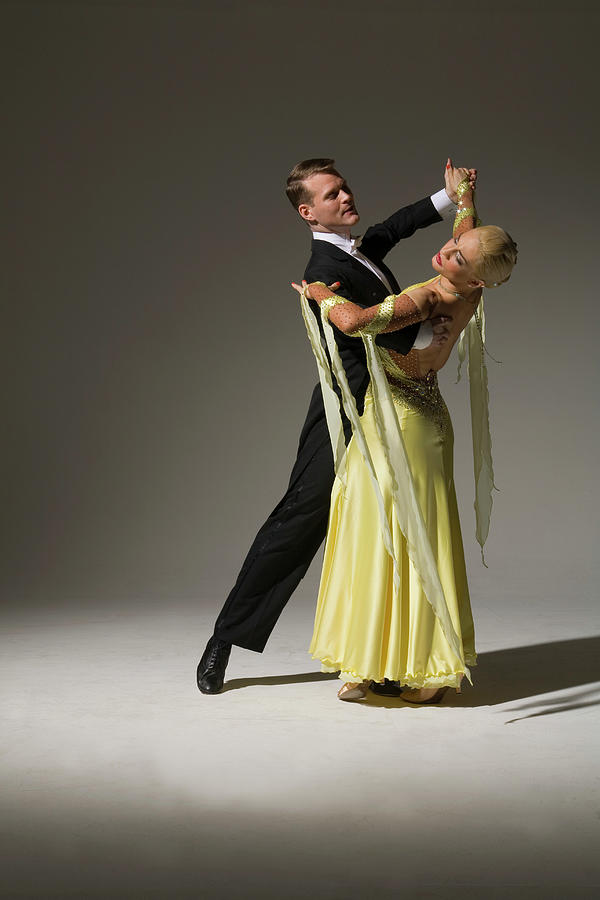 nine0014
nine0014 - If you didn't exit on your turn, exit on the next one.
- Write down or buy "crosses" (printout with marks) for dances or places in the final for your couple. This is necessary for the coach for further analysis and work with your pair.
- If a dance couple has been remarked (parents should not panic and find out the nature of the remarks) - report the remark to the coach - he will be able to explain what happened to you and adequately respond to it, if necessary. nine0014
At the tournament:
- Be at the competition 1-1.5 hours before the start.
- It is advisable for all club members participating in the tournament, as well as fans, to stay close to support each other.
- By the start of the competition, dancers must consider the entire hall and venue of the tournament, so as not to do this during the event.
- View the tournament schedule, the category performance program - if necessary, write down the order; nine0014
- 10 minutes before the performance, it is necessary to warm up;
- From now on, the dancers must be together, in pairs;
- After the dance, dancers must approach the coach (if the coach is with you) and not their parents;
- Closely monitor entries and control the order of your participation.

- If you didn't exit on your turn, exit on the next one.
- Write down or buy "crosses" (printout with marks) for dances or places in the final for your couple. This is necessary for the coach for further analysis and work with your pair. nine0014
When starting to take their child to ballroom dancing classes, many parents refuse to participate in competitions, motivating them to do it for themselves. Others do not exclude participation in competitions, but choose 2-3 major tournaments per year. They are convinced that you first need to reach a certain level, and only after that think about rewards.
In fact, participation in competitions is important both for those who simply want to learn how to dance, and if the goal is victories and great acrylic prizes. nine0003
Competitions are an incentive for improvement and a second wind
Participation in tournaments and competitions keep dancers in good shape, make them constantly stay in good shape.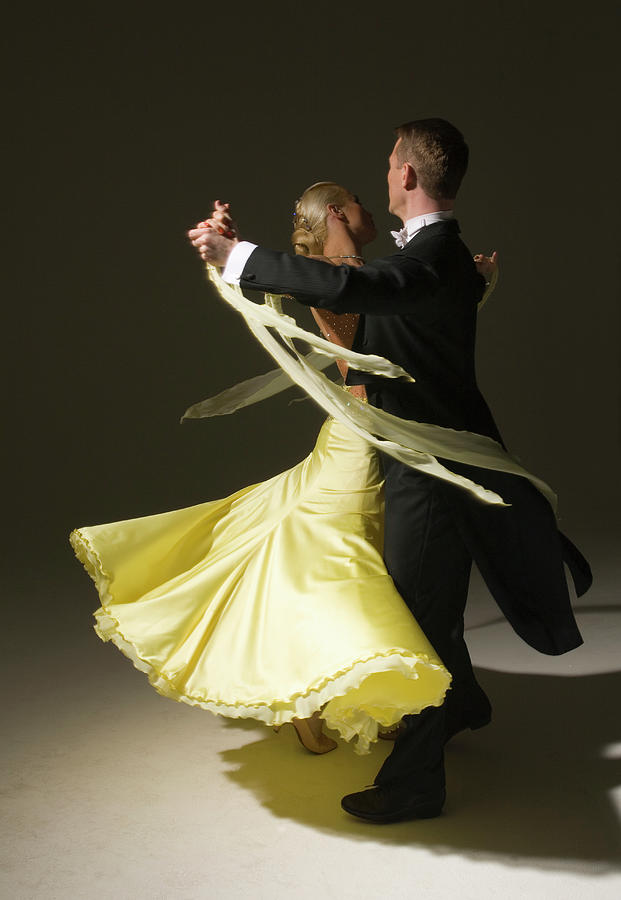 In addition, any competitions temper character, shape personality, bring up willpower, composure, faith in victory. Even if you are dancing for yourself, why refuse such a bonus.
In addition, any competitions temper character, shape personality, bring up willpower, composure, faith in victory. Even if you are dancing for yourself, why refuse such a bonus.
At competitions, children learn to empathize, cheer for each other, a team spirit is brought up, friendship grows stronger. By refusing to participate in competitions, parents tear the child away from the team, deprive him of the emotions necessary for raising a harmonious personality. nine0003
Refusal to participate in competitions reduces interest. Many children who show excellent results in the first year of training, subsequently begin to hack, lose interest in classes and soon give up dancing or continue to study only under pressure from adults. Interest burns out if it is not reinforced from the outside.
At competitions, participants compare themselves with other dancers, evaluate their strength. There is excitement, a spirit of competition. Winners receive a worthy reward for their work.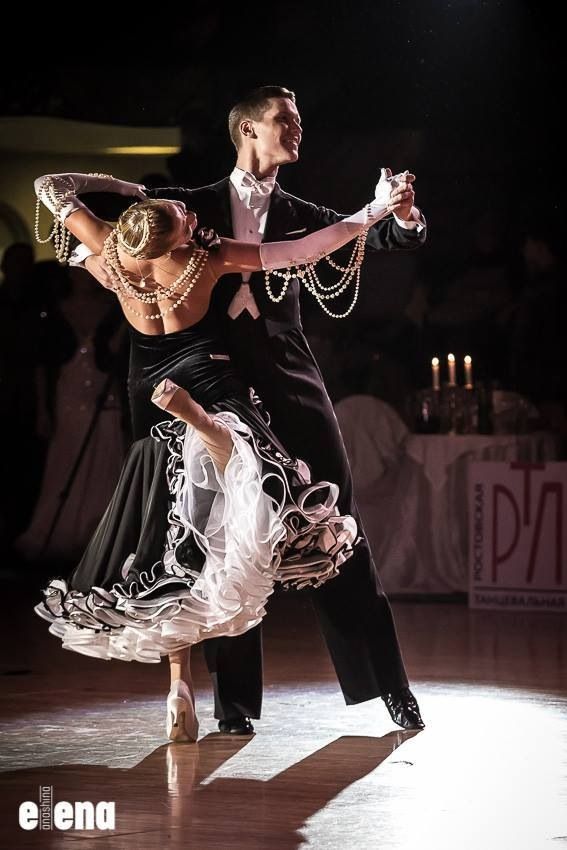 The losers get a second wind, there is a desire to prove that they, too, are capable of more. You can do it for yourself and not dream of becoming a world champion and a coach, but the acquired skills and strong character in life will not hurt anyone. nine0003
The losers get a second wind, there is a desire to prove that they, too, are capable of more. You can do it for yourself and not dream of becoming a world champion and a coach, but the acquired skills and strong character in life will not hurt anyone. nine0003
Tournament practice is an important condition for victory
Those who believe that it is possible to participate in competitions only after reaching a certain level of skill are also mistaken. They throw all their strength into training - they drive compositions, study technique, take individual lessons. Only this is not enough.
Competitions are stress, excitement, adrenaline rush. To learn to control oneself, the practice of participating in events of this kind is necessary. Only when you start going to tournaments as a job, experience appears. The dancer learns to cope with difficulties, begins to hear the music, can concentrate, understands how to interact with the public, fans and fans. nine0003
Dance floor skills play a huge role. Competition is always a new environment. The ability to profitably present oneself, choose the right angle, not get lost in the crowd, cope with unforeseen situations - this and other invaluable experience is worked out only in practice.
Competition is always a new environment. The ability to profitably present oneself, choose the right angle, not get lost in the crowd, cope with unforeseen situations - this and other invaluable experience is worked out only in practice.
There is also a rating of dancers. Winning a tournament for a permanent leader, who is known by the judges and loved by the fans, is easier than for a talent that has emerged from oblivion. Even if it's worth it. Each competition ends with a mandatory debriefing, analysis of mistakes and strengths. nine0003
Refusing to participate in ballroom dancing competitions means depriving the dancer of the fuel that moves him forward, both in dance activity and in life.
1. Never, under any circumstances, compare yourself to other performers.
2. Know your purpose clearly! Who do you want to become. If you don't know, don't be afraid to experiment.
3. In all colors and tones, imagine yourself to be who you want to become.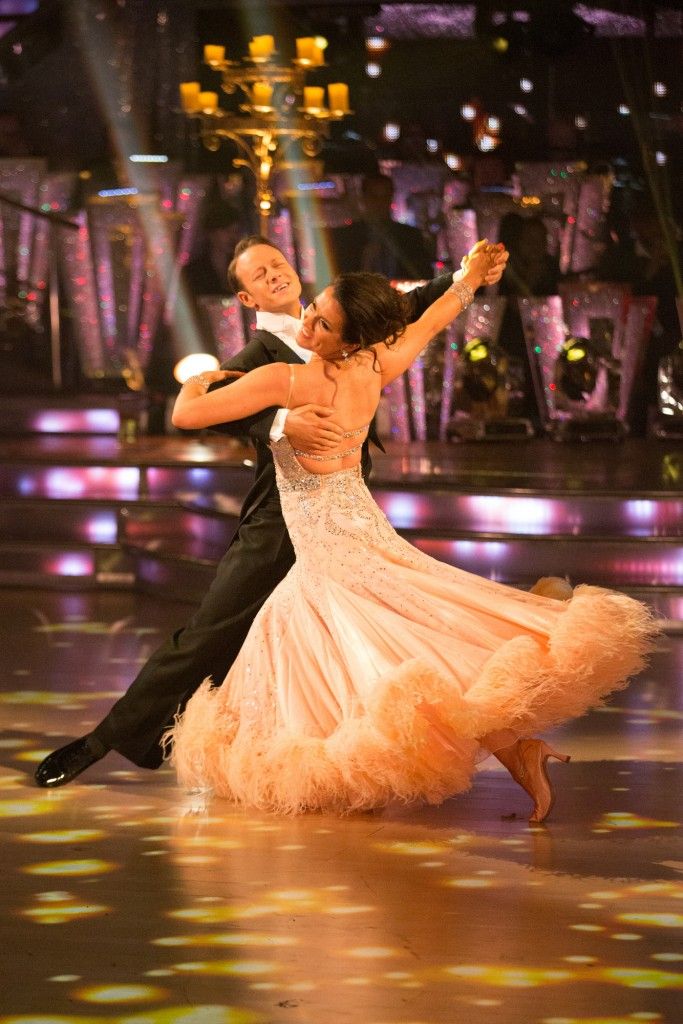 This should be your daily work on yourself. nine0003
This should be your daily work on yourself. nine0003
4. Constantly listen to music, varied in styles and trends. Don't stop looking for something new for yourself.
5. Don't skip rehearsals/trainings for any reason.
6. Practice all the material learned in class or training at home.
7. Be sure to check with the teacher or coach after the rehearsal or training for all elements of movements that are unclear to you during the lesson.
8. Don't take everything for granted. You are given the opportunity and conditions for development. Then you decide what to do with the acquired knowledge - apply or forget. nine0003
9. If something doesn't work out for you, it's just an excuse to work with double strength. Don't whine! Don't complain! Get up, get together and move forward towards your goal!
10. Improvisation. Be sure to improvise, combine different combinations and movements. Try, try and try again! This will be a good impetus for your professional growth.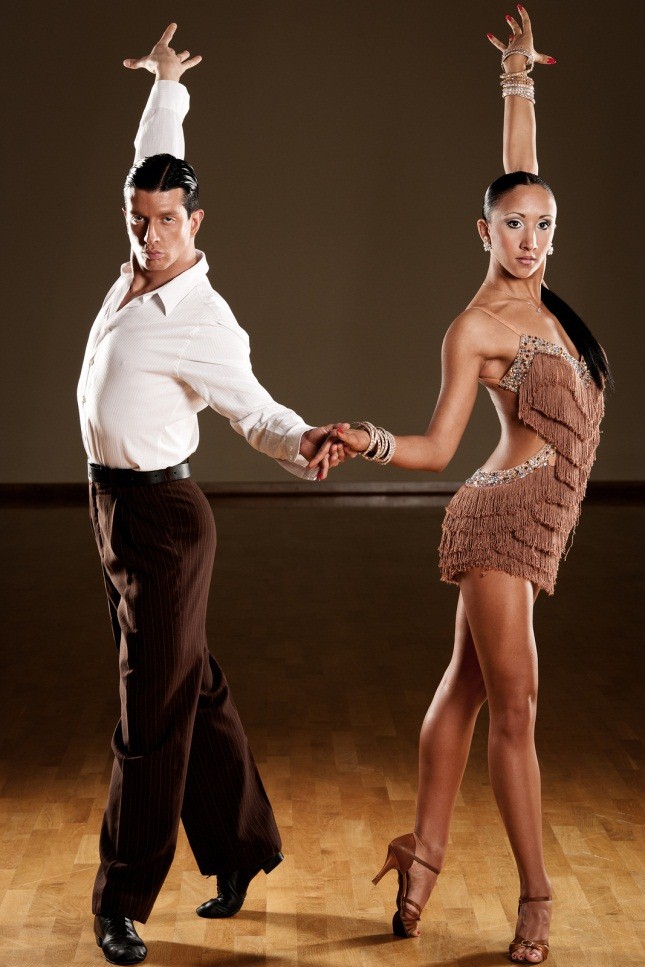
11. Be interested in what you do, what you dance. Always improve, look for new knowledge from other masters.
12. And remember the most important thing: dance is the soul dancing to the music!
| Ballroom etiquette General rules of conduct at the ball A young man, like a girl, accepting an invitation to a ball, at the same time undertakes to dance. In the event of a shortage of gentlemen or ladies, the obligation to dance falls on everyone. To show displeasure or to let it be noticed that you are dancing out of necessity is extremely indecent. On the contrary, he who wants to become the darling of society must indulge in pleasure with all his soul and dance with any partner. nine0003 Don't forget for a moment at the ball that the facial expression should be cheerful and kind. When arriving late to the ball, you must first greet the hosts, and only then start conversations with acquaintances (the latter can be greeted with a nod of the head). Dances can be invited in advance (including at the ball). However, it is courteous to come to the ball, promising in advance no more than three dances. Chief in the dance hall - manager of the ball. He must be obeyed unquestioningly, not to argue with him and not to make scandals. The steward is responsible for the order in the hall. nine0003 Gentlemen must look after the ladies, bring them soft drinks and entertain them in every possible way. Conversations should take place quietly and not touch on complex or serious topics. Any form of humor should be avoided. Cavaliers who take pleasure in causing laughter in their address are to be pitied. Disputes and quarrels that arise between gentlemen must be settled outside the ballroom. Ladies should not slander, on the contrary, they should behave pleasantly, nicely and kindly. In addition, ladies should avoid any manifestation of bad humor, which may cause disapproval. The main enemy of a lady at a ball is jealousy, which is always noticeable. Ladies should move gently and silently both at home and in society, and leave the impression of the soft steps of a fairy. nine0003 Loud laughter, noisy quarrels, rude words, indiscreet looks, in general, everything that is at odds with the laws of beauty should be avoided with special care. The behavior of a lady in relation to a gentleman should always be measured and modest, but ladies should not refuse gentlemen who invited them to dance - a recognition worthy of any attention. In general, at a ball one should behave modestly, dance gracefully and keep up appearances; jumping, breaking, taking cutesy poses would mean exposing yourself in the eyes of some as an object worthy of ridicule, and in the eyes of others - an object worthy of pity. The gentleman who invites the lady to the dance approaches her and, bowing gracefully, makes an invitation in the most polite and delicate form: "Let me have the pleasure of inviting you to [dance]." If the invitee is well known to you, then simply: "Do not deny me the pleasure of dancing with you." It is also possible to invite the lady you like by going up to her, bowing and giving your right hand (it is not necessary to say anything). The lady, accepting the invitation, gives the gentleman her left hand. nine0003 If the gentleman’s bow was not taken personally by the one he wanted to invite, then a well-bred gentleman in no case shows his disappointment, but observes the rules of decency and blames himself first of all for awkwardness, but rather gets out of the situation with humor . It is indecent to invite a lady to whom you are not represented. To do this, it is best to either find a person who agrees to introduce you, or, as a last resort, introduce yourself. At the masquerade ball, the mask has the right to invite strangers, the rest can invite only acquaintances. nine0003 If the lady is not alone, but in the company of a companion or friends, it is necessary, based on the general norms of behavior, to first apologize for the interrupted conversation, if necessary, ask the companion's consent, and then invite the lady to dance. The cavalier was recommended to make an invitation in the form of a compliment: "You are so beautiful today that it is a pleasure to admire you. I hope you will give me the happiness of admiring you in a mazurka?" It is strongly recommended that when you come to the evening with a lady, dance with her the allowed number of dances (usually - 3). The height of faux pas would be to dance all the time with others. Don't be surprised if by the end of the evening she prefers someone else to walk her home. nine0003 However, it is indecent to dance a lot with the same partner. With a partner who is not the bride/groom, you can dance no more than three dances per evening, and you cannot dance two dances in a row. When a gentleman invites a lady, she bows her head as a sign of consent, saying: "with pleasure", "good", in case of disagreement, the lady is also allowed to remain silent and answer the gentleman's invitation only with a gesture, or: "I'm sorry, I already promised" , or: "I'm already dancing." But at the same time, the lady can offer the gentleman another dance of her choice or the gentleman's choice. It is unethical and stupid to insist on an invitation or find out the reasons for refusal. It would be wise to bow very politely and walk away without any comment, without expressing your displeasure. nine0003 An invitation to dance can be rejected if:
In any other case, the lady was obliged to accept the invitation. If a lady accidentally forgot that she gave her word, and while she is going to dance with another gentleman, the first one appears, then she should apologize. To get out of this unpleasant situation, it is best to completely abandon the dance or invite the first gentleman to dance another dance with her. But a gentleman to invite a lady and then forget about it is not only the most unforgivable impoliteness, but simply rudeness; in such a case, he quite rightly incurs the wrath of the lady invited by him and the whole society. nine0003 In a situation where your companion is invited to a dance by your acquaintance, it would be gallant to invite his lady so that she would not be left alone. Finally, having invited the lady, gallantly escort her to your chosen place in the hall and bow slightly, as the music of many dances will not allow you to do this. A lady must strictly observe that her gentleman is on her left side, both during dances and walking with her through the hall. The lady puts her left hand slightly below the man's shoulder. Depending on the fashion, a fan and an elegant handkerchief are held in the same hand, or the handkerchief is hidden, and the fan is hung on a chain, cord or ribbon attached to the belt. The purpose of the fan is to inspire coolness; to hide behind them, so that it would be more convenient to talk and laugh with a gentleman, is indecent. Young, very lively ladies should also notice to themselves that it is not good to lose flowers from their hair or from a dress and pieces of the dress itself and its trimmings. This always indicates unrestrained, abrupt movements and a lack of accuracy and modesty. nine0003 During parade dances (polonaise, minuet) one should only stand behind already standing couples. This rule does not apply to the host of the ball. The optimal distance between pairs is at least a meter. The gentleman leads the lady in the dance, and he must take all mistakes personally; if a couple accidentally hit another couple, then the gentleman apologizes, because he is the leader. During the dance, the gentleman and the lady should not be too far apart, but they should not cling to each other. Dancing with a lady wearing a low-cut dress, the gentleman cannot afford to hold her by her bare shoulders or back. The dancing cavalier never looks down at his feet, even to make sure that he is doing all the steps correctly. The cavalier should keep straight, with dignity. nine0003 A lady should also dance with her eyes up, only occasionally allowing herself to cast a short glance at the floor. However, no one can forbid a dancing lady to shoot a glance at a gentleman who likes her! As it is considered indecent to speak incessantly over the ear of your lady during the dance, so it would certainly be impolite not to say a few words to her. The conversation between the lady and the gentleman should be extremely kind and pleasant. Talking banalities, discussing other guests of the ball is a bad form. nine0003 In a dance that has a strict sequence of figures, watch the previous couples, especially the first one, and do nothing before them. During dances of free movement, for example, the Viennese waltz, do not rush to immediately pair up, first wait for the music and bow to it, since the music here allows this. At the end of the dance, the gentleman bows to his lady and accompanies her to the place from where he invited her, or to wherever the lady wishes, thanking her along the way for the honor she did by dancing with him in a pair. All couples seem to perform the same movements, but an attentive observer can find in them a lot of features that serve as a true characterization not only of each individual couple, but also of the individual. According to the harmonic movements of a separate pair, which seems to be one, it is often possible to unmistakably conclude that there is sympathy between persons. Graceful, light, as if soaring movements of a young girl are always attractive; over the imperfections of the same movements, they always allow themselves to laugh, without at all taking into account that the cause is often a cavalier. Indeed, the task of the latter in dancing is much harder and more important than the ladies. He must be able to dance so well as to be able to cover up his lady's little awkwardness. Therefore, a young man should take care to be able to dance well; then he can be sure that he will not receive a refusal; on the contrary, he will be welcomed everywhere and invited to balls. Balls in the 19th century were a favorite entertainment of the public - both high society and bourgeois, and even peasants. Everyone gave balls - in proportion to their means and capabilities. The whole of St. Petersburg came to Princess Zinaida Yusupova, only colleagues gathered to the bourgeois family, but both of them were called a ball. The ball was a very expensive pleasure for the host. "I gave three balls every year and finally squandered" - says about Onegin's father. But I will not go into financial and economic details. It is more interesting to talk about what happened at the balls. Every ball begins with an invitation. “Sometimes he was still in bed, they carried Pushkin’s notes to him, somewhat inaccurately reflects the situation: invitations to the ball could not be sent on the day of the ball - the addressees had to receive them in three weeks, and make up an answer - whether they would or not. The invitations were very concise, for example: "Prince Potemkin asks to honor him, welcome to the masquerade, this February 8, 1779 at the Anichkov House at 6 o'clock." However, all the rest of the information was superfluous - everyone already knew the other ballroom conventions.0003 The routine of the ball was unshakable. Guests began to arrive after six or nine in the evening, some arrived at ten or midnight. After the arrival of the guests, whom the host was supposed to meet, the ball opened with a solemn polonaise, a dance-procession, in which all the guests were supposed to take part, even if they then sat all evening and all night at the card tables. The ball was just beginning with the waltz, and other dances followed it, in particular, the Hungarian, Krakowiak, Padepatiner, Padespany, Padekatre . The duty of the gentlemen was to ensure that the ladies had everything they wanted. People came to the ball dressed smartly. Ladies and girls dressed in dresses according to the latest fashion, each of which was created for 1-2 balls. Ladies could choose any color for the dress (unless it was specifically agreed - for example, on January 24, 1888, an emerald ball was held in St. Petersburg, at which all those present were dressed in the appropriate color), dresses for girls were sewn in white or pastel colors - blue, pink, ivory. The cut of ball gowns depended on fashion, but one thing remained unchanged in it - open neck and shoulders. With such a cut of the dress, neither a lady nor a girl could appear in the world without jewelry around the neck - a chain with a pendant, a necklace - something must have been worn. Felix Yusupov in his memoirs describes such a case: his parents, Count Sumarokov-Elston and Princess Yusupova, went to a performance at the Mariinsky Theater. During the intermission, the maid of honor of Empress Maria Feodorovna came into their box and asked the princess to remove the family diamond that hung around the neck of Zinaida Yusupova, since the empress did not decorate herself with a diamond of such a size that day. |
 A sad or angry face at a ball is the same as dancing at a wake.
A sad or angry face at a ball is the same as dancing at a wake. 
 nine0003
nine0003 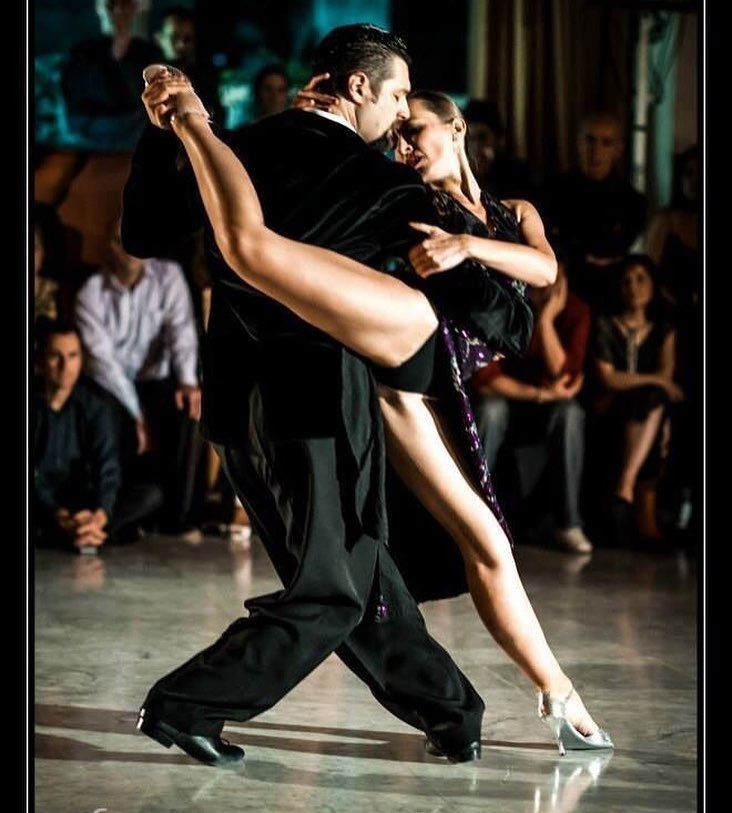

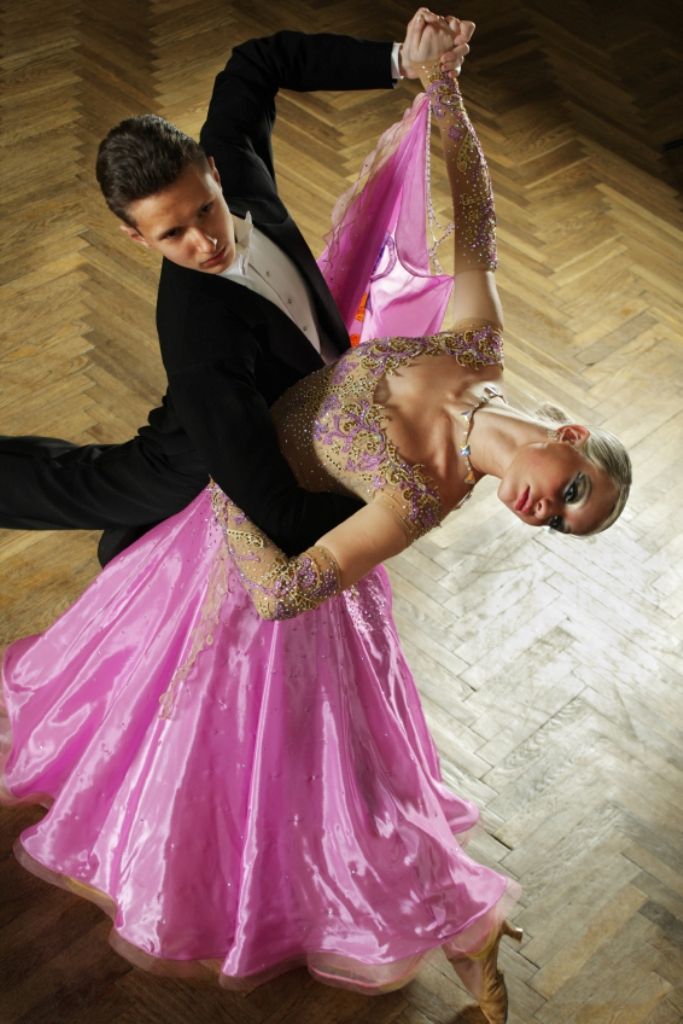 If she refused for no reason, she was not eligible to participate in this dance at all.
If she refused for no reason, she was not eligible to participate in this dance at all. 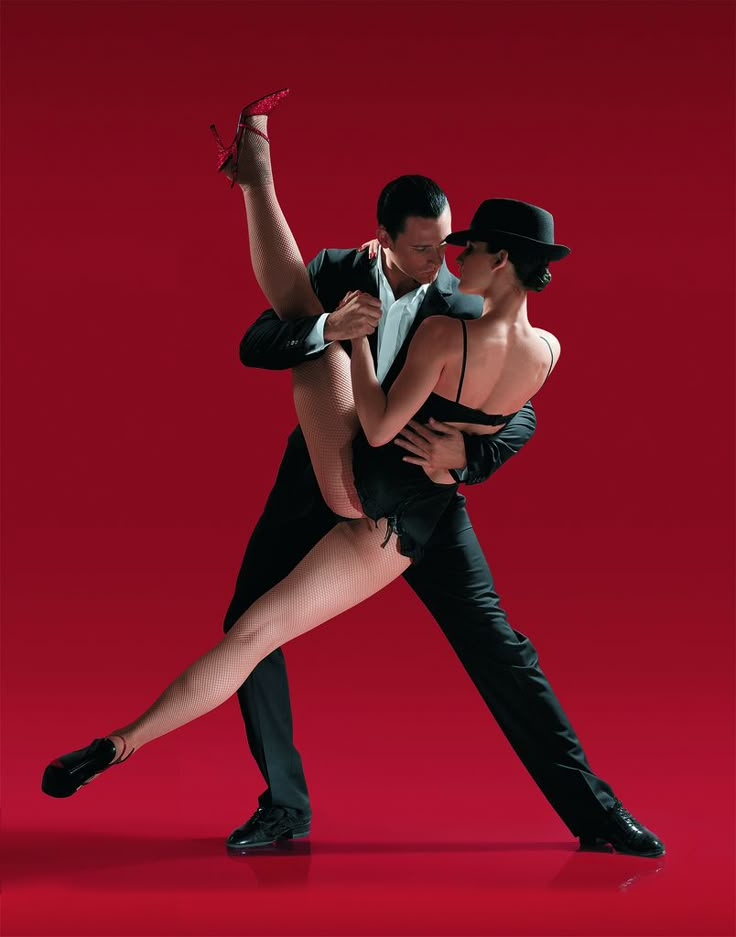 Neither ladies nor gentlemen take off their gloves during the ball, and even more so they don’t dance without gloves. nine0003
Neither ladies nor gentlemen take off their gloves during the ball, and even more so they don’t dance without gloves. nine0003 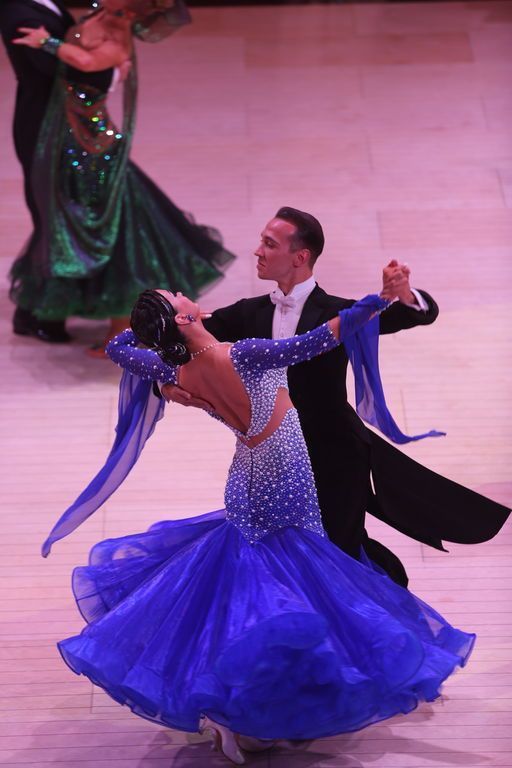 If there is too much steam, it is worth standing aside, forming a different line. If the hall is free, the gentleman should lead the lady to the dance in front of him, but if it's crowded, go ahead himself so that the crampedness does not cause inconvenience to the chosen one. Don't get too close to the dancers, avoid collisions. If a collision occurs, it is worth apologizing and paying attention. It is considered polite to bow to your partner before starting the dance. In general, the dance usually begins with a bow from the gentleman and a return curtsey from the lady. nine0003
If there is too much steam, it is worth standing aside, forming a different line. If the hall is free, the gentleman should lead the lady to the dance in front of him, but if it's crowded, go ahead himself so that the crampedness does not cause inconvenience to the chosen one. Don't get too close to the dancers, avoid collisions. If a collision occurs, it is worth apologizing and paying attention. It is considered polite to bow to your partner before starting the dance. In general, the dance usually begins with a bow from the gentleman and a return curtsey from the lady. nine0003 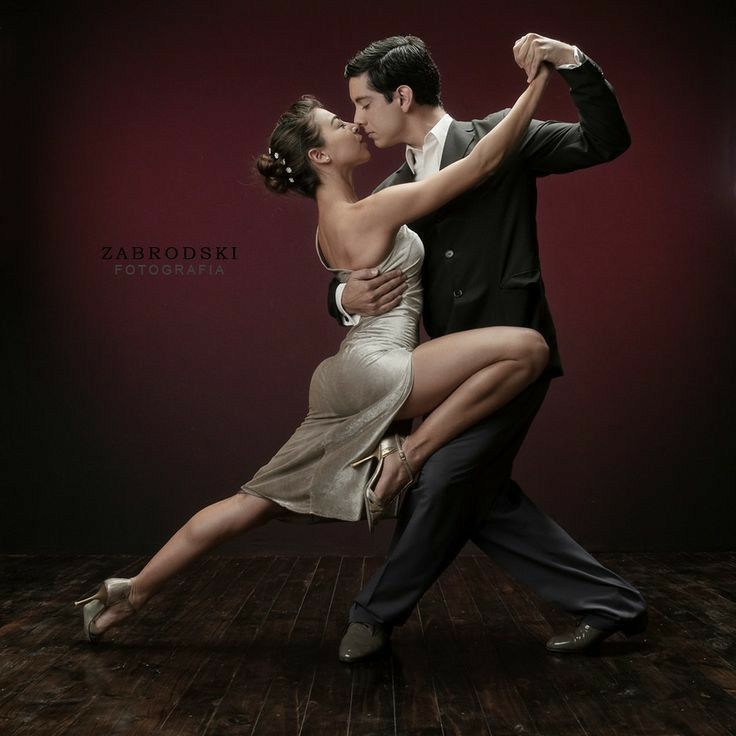
 While dancing, move along with everyone, try not to move, or move along the usual line of dance, in the outer circle. If you are dancing more or less on the spot, or if for some reason you get lost, then it is better to move to the center of the hall, but not outside, and even more so, do not stay on the dance line. nine0003
While dancing, move along with everyone, try not to move, or move along the usual line of dance, in the outer circle. If you are dancing more or less on the spot, or if for some reason you get lost, then it is better to move to the center of the hall, but not outside, and even more so, do not stay on the dance line. nine0003 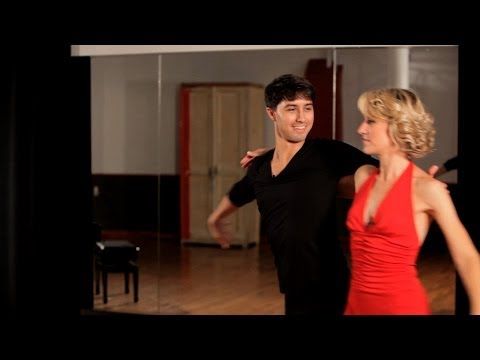 nine0003
nine0003  nine0003
nine0003  In the second half of the 19th century, the polonaise was sometimes performed at the end of the ball, then the dancing began with the waltz. Then waltzes, polkas, quadrilles, mazurkas alternated. In the middle of the ball there was a dinner, to which each gentleman accompanied the lady. If the gentleman came to the ball without a lady, the hostess of the ball could ask him to escort the lady to the ball (for example, who arrived with a couple of relatives and was therefore not accompanied by a gentleman). When the couple sat down at the table, they took off their gloves and covered their knees with a napkin. Before getting up from the table, gloves were put on again, napkins were left on the backs of chairs. Then the dancing continued again. The ball usually ended with a many-hour cotillion, at the end of 19centuries, sometimes replaced by a strange dance called the square dance monster.
In the second half of the 19th century, the polonaise was sometimes performed at the end of the ball, then the dancing began with the waltz. Then waltzes, polkas, quadrilles, mazurkas alternated. In the middle of the ball there was a dinner, to which each gentleman accompanied the lady. If the gentleman came to the ball without a lady, the hostess of the ball could ask him to escort the lady to the ball (for example, who arrived with a couple of relatives and was therefore not accompanied by a gentleman). When the couple sat down at the table, they took off their gloves and covered their knees with a napkin. Before getting up from the table, gloves were put on again, napkins were left on the backs of chairs. Then the dancing continued again. The ball usually ended with a many-hour cotillion, at the end of 19centuries, sometimes replaced by a strange dance called the square dance monster. 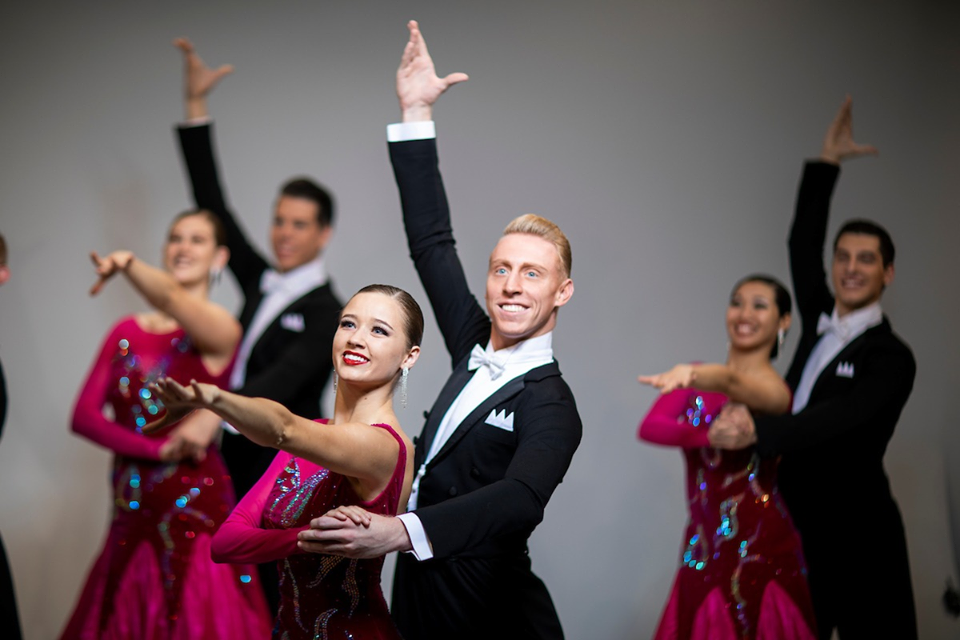 .. There was a certain dance order at the balls, and everyone knows that the so-called small dances will be followed by the first Quadrille, then, following the routine, the second, third. After the fourth quadrille and small dances, as a rule, there was a mazurka. This is a special dance. He, like the quadrille, was scheduled for all the ladies in advance, and every gentleman, every lady knew when and with whom they were dancing. It should be noted that among all the dances, the mazurka and cotillion were the most "important" invitations to the ball, for the reason that after the mazurka the gentleman led the lady to the table for dinner, where they could chat, flirt and even confess their love. Everyone had dinner in the side parlors, at small tables. At each table, guests gathered in their own company. In addition, a buffet with various dishes, champagne and other hot and cold drinks was always open at the balls. nine0003
.. There was a certain dance order at the balls, and everyone knows that the so-called small dances will be followed by the first Quadrille, then, following the routine, the second, third. After the fourth quadrille and small dances, as a rule, there was a mazurka. This is a special dance. He, like the quadrille, was scheduled for all the ladies in advance, and every gentleman, every lady knew when and with whom they were dancing. It should be noted that among all the dances, the mazurka and cotillion were the most "important" invitations to the ball, for the reason that after the mazurka the gentleman led the lady to the table for dinner, where they could chat, flirt and even confess their love. Everyone had dinner in the side parlors, at small tables. At each table, guests gathered in their own company. In addition, a buffet with various dishes, champagne and other hot and cold drinks was always open at the balls. nine0003  At the same time, the gentleman must entertain the ladies and conduct small talk with them. At dinner, the guests talked about many things: about music, theater, the latest news from the gossip column, who marries whom or whom ... After dinner, they always danced the cotillion. Large boxes of flowers were brought to him. Cavaliers sorted bouquets and brought them to their ladies. After all this, the conductor of the ball and his assistants on swords brought in a lot of multi-colored ribbons (balds), as well as narrow and short ribbons with bells at the ends. The gentlemen, having dismantled the ribbons, brought them to their chosen ones, and they put one ribbon over the other over their shoulders. Moreover, men tied short narrow ribbons with bells to the ladies' hands, starting from the wrist to the elbows. “It was, let me tell you, a nice job. You bow to the gentle hand of the lady, to her fragrant body and inhale the aroma of enchanting French perfumes ... "
At the same time, the gentleman must entertain the ladies and conduct small talk with them. At dinner, the guests talked about many things: about music, theater, the latest news from the gossip column, who marries whom or whom ... After dinner, they always danced the cotillion. Large boxes of flowers were brought to him. Cavaliers sorted bouquets and brought them to their ladies. After all this, the conductor of the ball and his assistants on swords brought in a lot of multi-colored ribbons (balds), as well as narrow and short ribbons with bells at the ends. The gentlemen, having dismantled the ribbons, brought them to their chosen ones, and they put one ribbon over the other over their shoulders. Moreover, men tied short narrow ribbons with bells to the ladies' hands, starting from the wrist to the elbows. “It was, let me tell you, a nice job. You bow to the gentle hand of the lady, to her fragrant body and inhale the aroma of enchanting French perfumes ... " Cavaliers - in a tailcoat, tuxedo or suit (depending on the decade), a white shirt and always white gloves. Moreover, in the manuals, the lady has the right to refuse a gentleman without gloves, and for a gentleman it is better to come to the ball in black gloves than without gloves at all. A boutonniere was attached to the lapel of the tailcoat. The military came in uniforms. The costumes of gentlemen depended little on fashion and were recommended to be sewn in classical forms so that the robes would last longer. Cavaliers came to the ball in boots, and only the military could afford boots, but without spurs. nine0003
Cavaliers - in a tailcoat, tuxedo or suit (depending on the decade), a white shirt and always white gloves. Moreover, in the manuals, the lady has the right to refuse a gentleman without gloves, and for a gentleman it is better to come to the ball in black gloves than without gloves at all. A boutonniere was attached to the lapel of the tailcoat. The military came in uniforms. The costumes of gentlemen depended little on fashion and were recommended to be sewn in classical forms so that the robes would last longer. Cavaliers came to the ball in boots, and only the military could afford boots, but without spurs. nine0003  Gloves were matched to the dress to match the dress or white (it was considered tasteless to wear rings over gloves). Ladies could decorate themselves with a headdress - for example, a beret. The girls were encouraged to have a modest hairstyle. In any case, the neck had to be exposed. Ladies' jewelry could be anything - the main thing is that they are chosen with taste. Girls should appear at balls with a minimum amount of jewelry - a pendant around the neck, a modest bracelet. nine0003
Gloves were matched to the dress to match the dress or white (it was considered tasteless to wear rings over gloves). Ladies could decorate themselves with a headdress - for example, a beret. The girls were encouraged to have a modest hairstyle. In any case, the neck had to be exposed. Ladies' jewelry could be anything - the main thing is that they are chosen with taste. Girls should appear at balls with a minimum amount of jewelry - a pendant around the neck, a modest bracelet. nine0003 